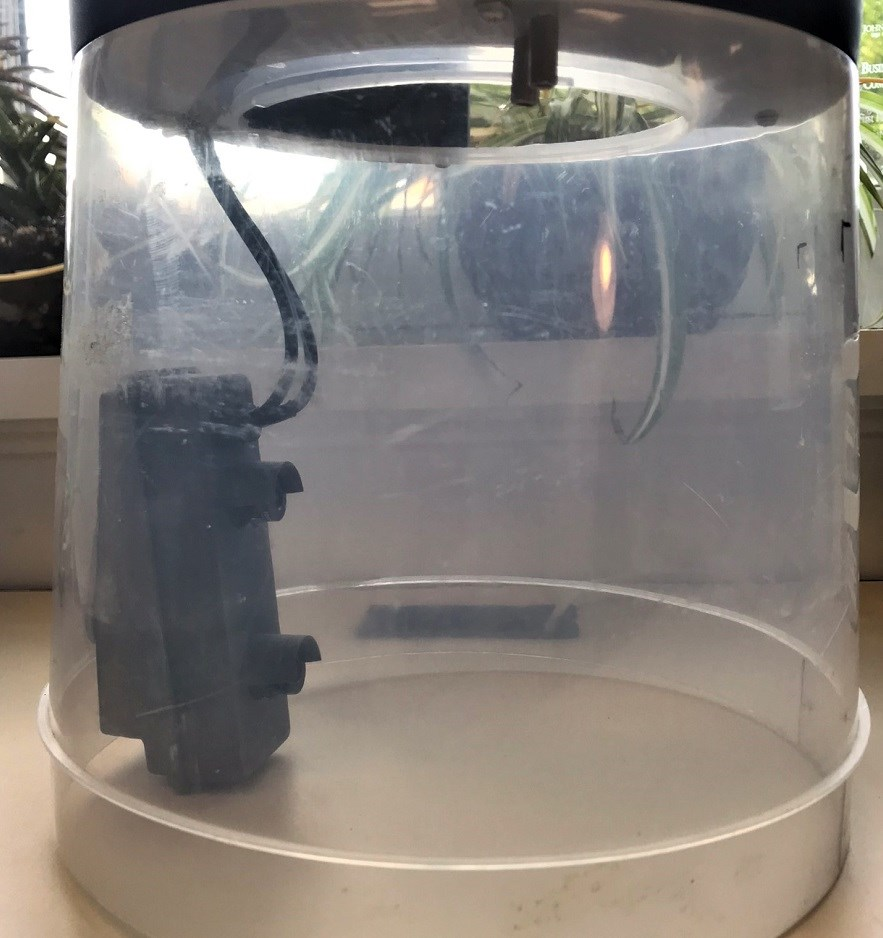Apr 16 2020
According to the World Health Organization (WHO), dengue, malaria, and yellow fever—diseases that are transmitted by mosquitoes—account for thousands of deaths each year.
 A new low-cost imaging system for monitoring mosquitoes could be used to transmit images of mosquitoes inside traps like the one seen here. This could make it easier to track mosquito species that carry disease. Image Credit: Adam Goodwin, Johns Hopkins University
A new low-cost imaging system for monitoring mosquitoes could be used to transmit images of mosquitoes inside traps like the one seen here. This could make it easier to track mosquito species that carry disease. Image Credit: Adam Goodwin, Johns Hopkins University
A new, cost-effective imaging system could potentially make it easier to track the disease-carrying mosquito species, allowing for a targeted and quicker response.
A remote system like ours can dramatically reduce the labor needed to monitor mosquitos in a given area, thus greatly increasing the capability to do more monitoring. If you can provide more mosquito data, then you will more quickly catch outbreaks and save more lives.
Adam Goodwin, Research Team Leader, Johns Hopkins University
Goodwin and collaborators’ study—published in Biomedical Optics Express, the journal of The Optical Society (OSA)—is part of a feature issue on “Optical Technologies for Improving Healthcare in Low-Resource Settings.”
In this latest study, the researchers have described a new imaging system, which has been specifically developed to send images from the interiors of a mosquito trap. These images comprise enough details to allow entomologists to differentiate the mosquitoes’ scale color and wing patterns—features that denote whether a mosquito is a disease-carrying species. The data obtained can be utilized to plan interventions that work favorably against those mosquito species.
“The new system is a classic application of an internet of things (IoT) device,” added Goodwin. “It could eventually be paired with computer vision algorithms to automatically determine species and provide that information to public health systems.”
Developing a Remote Imaging Trap
In many parts of the world where mosquito-borne diseases are a major problem, mosquitoes have to be continually trapped at various locations to understand the type and the number of mosquito species that are present. A worker would then need to drive around a region or county to pick up and drop off scores of traps every week and bring the mosquito specimens back to the laboratory to be studied under a microscope.
Our new optical system can be placed inside a traditional mosquito trap to provide remote surveillance of the abundance, diversity and distribution of mosquito species. Using imaging is particularly appealing because as long as image quality is high, several mosquitos could be identified from an image at once.
Adam Goodwin, Research Team Leader, Johns Hopkins University
During the development of the imaging system, the scientists looked at the potential to precisely detect Aedes aegypti mosquitoes, which are known to spread chikungunya, dengue, yellow fever, and Zika. Although native to Africa, this invasive species has established itself in several regions of the world, such as Asia, Europe, and North America
According to the researchers, that same method could also be used on other kinds of insects, provided there is a means to trap and image these insects reliably.
Using camera sensors and optics that are readily available in the market, the scientists improved their optical set-up to acquire a resolution that adjusted the requirement to image several mosquitoes simultaneously and has the potential to view adequate details to detect the mosquito species.
Our new system would be particularly useful in monitoring Aedes aegypti in hard to reach areas and at commercial ports of entry where invasive species can be brought from other countries. It could also expand current surveillance operations for regions already monitoring local populations of Aedes aegypti.
Adam Goodwin, Research Team Leader, Johns Hopkins University
In a majority of the cases, public health systems were only needed to find out whether there are any variations in the type or the number of mosquitoes on an hourly or daily basis. This implies that a camera sensor would simply have to be switched on a few times every day, at the most. This approach would help to maintain the consumption of power within the range viable for an internet-connected device.
Testing the System
To check the novel imaging system, the scientists compared the ability of the entomologists to divide specimens based on the image obtained from a digital microscope and images acquired from the remote imaging system. The scientists did not find any major difference in their abilities between the types of images.
Even though the entomologists did not perform well on the classification of species for either the remote system images or the digital microscopy images, they did exceptionally well on the classification of the genus.
“Entomologists are not used to identifying specimens from an image because they normally have the specimen in person and manipulate it with tweezers under a microscope,” added Goodwin. “However, recent work using convolutional neural networks to classify mosquitos from an image does show promise.”
The scientists are now planning to further improve the remote trap and also incorporate internet-connectivity and computer vision algorithms into the imaging system.
“This would enable species information to be sent directly to the public health system for decision-making. This is where we think the system will really shine,” concluded Goodwin.